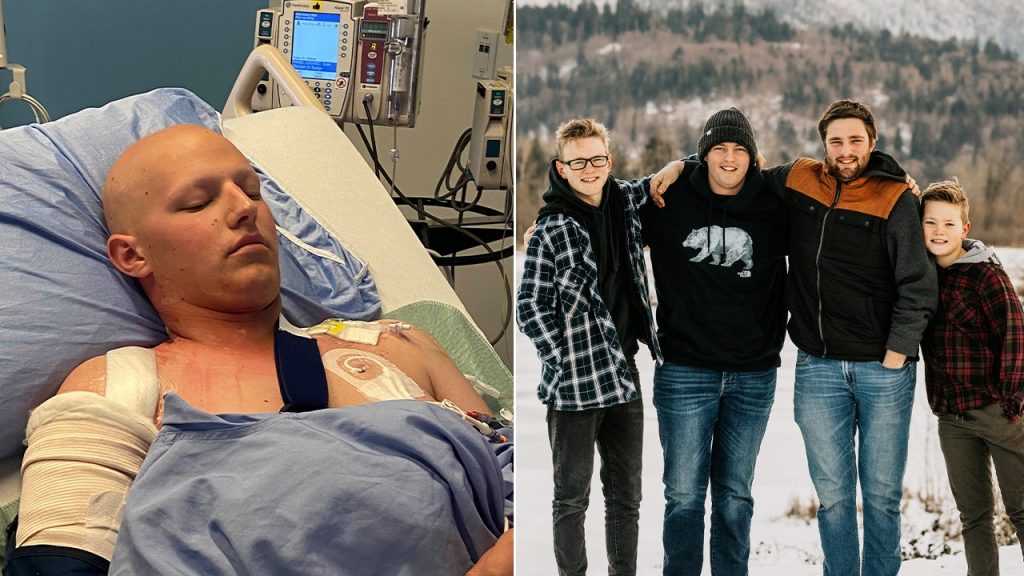A Teenager’s Final Stand: The Global Battle Over Youth Euthanasia
In the spring of 2022, Canadian teenager Markus Schouten faced his mortality with extraordinary courage. After his oncologist delivered the devastating news that his cancer was terminal, Markus made a decision that would echo far beyond his own life. From his family’s living room sofa, he dictated a powerful letter to the Canadian Parliament’s Special Joint Committee on Medical Assistance in Dying. His message was clear and profound: no child should ever be forced to choose between life and death. “Life is worth living and we should always work to alleviate suffering without eliminating the sufferer,” he wrote, with his parents as co-signatories. A month later, Markus passed away surrounded by loved ones, his parting words being, “See you in paradise.” This was not just a personal goodbye; it was the beginning of his parents’ mission to honor their son’s legacy by opposing the expansion of euthanasia laws to minors.
Three years later, Mike and Jennifer Schouten have become key figures in a growing resistance movement against what could be called “Assisted Suicide Inc.” – a global network of organizations working to expand euthanasia laws worldwide. A Fox Digital investigation has uncovered at least 96 organizations spanning six continents that promote various forms of assisted dying. Using euphemisms like “medical assistance in dying,” “dying with dignity,” and “right to die,” these groups have successfully campaigned to legalize adult euthanasia in multiple countries, including Australia, Belgium, Colombia, the Netherlands, New Zealand, Spain, and eleven U.S. states. What began as a limited effort to provide relief for terminally ill adults has evolved into an international industry that now includes euthanasia services for funeral homes, “suicide pods,” “suicide tourism,” and even training for “death doulas.” The movement is particularly concentrated in Western countries, with 41 groups in Europe, 31 in North America (25 in the U.S. alone), and 13 in Oceania.
The most alarming development in this global campaign is the push to extend euthanasia rights to children under the legal concept known as the “mature minor doctrine.” Originally established in a 1967 Washington Supreme Court case, this doctrine has expanded over decades from providing limited medical discretion for minors to granting children broad autonomy over medical decisions – often without parental involvement. Already applied to issues like gender transitions, contraception, and abortion in many jurisdictions, advocates are now leveraging this same principle to argue that children should have the “medical autonomy” to choose assisted suicide. Three countries – the Netherlands, Belgium, and Colombia – have already crossed this threshold, permitting “mature minors” to die by physician-assisted suicide under certain conditions. Despite Markus Schouten’s heartfelt plea, in February 2023, Canada’s Special Joint Committee recommended extending euthanasia rights to some youth, stating that while parents should be “consulted,” the “will of a minor” with decision-making capacity “ultimately takes priority.”
The United Kingdom has become the latest battleground in this debate. As a bill to legalize adult euthanasia moves through British Parliament, lawmakers narrowly voted 259 to 216 to bar physicians from discussing assisted suicide with youth – meaning nearly half supported such discussions. Katharine Birbalsingh, a prominent British educator known as “Britain’s Strictest Headmistress,” believes youth inclusion is inevitable: “Assisted suicide will spread, full stop. And the people allowed to do assisted suicide will grow, making it younger and younger.” She argues that Western societies have embraced the dangerous notion that “the child must lead,” forgetting that adults are supposed to protect young people, sometimes from themselves. “There’s just a million reasons why young people would want to choose death,” Birbalsingh explains. “Young people are compulsive, they make whimsical decisions. They make irresponsible decisions. They’re young. That’s sort of the definition of a child.”
The statistics from countries where euthanasia is already established paint a sobering picture of what expanded access might mean. In Canada, where the practice is referred to by the euphemism “MAID” (Medical Assistance In Dying), approximately 15,000 Canadians died through this process in 2023 – about one in every 20 deaths nationwide and a 16% increase from 2022, making assisted suicide the fifth leading cause of death in the country. The movement is also financially robust, with Dying with Dignity Canada reporting $3 billion in expenses in 2024, including over $800,000 for advertising and promotions. In the Netherlands, where euthanasia has been legal since 2002 and can apply to children as young as one year old (including newborns deemed to be “suffering unbearably with no prospects of improvement”), the practice accounted for 9,958 deaths in 2024, representing 5.8% of all deaths in the country.
Particularly troubling are the trends among young people seeking euthanasia for mental health conditions. A recent study published in the International Journal of Psychiatry found that among Dutch euthanasia applicants, 73% were young women with psychiatric diagnoses including major depression, autism, eating disorders, and trauma-related conditions. In one disturbing case, a teenage boy with autism ended his life after describing it as “joyless” and “lonely,” with his doctor reporting “no doubt about his decisional competence.” Last year in the Netherlands, 14 psychiatrists urged an investigation into the euthanasia of a 17-year-old girl named Milou, who died after years of depression and anxiety following childhood sexual abuse. They warned against the “widespread promotion of euthanasia” leading to “unnecessary deaths,” but prosecutors declined to act. Against this backdrop, Mike and Jennifer Schouten remain committed to fulfilling their son’s final wish. Michael recalls Markus saying in his final days, “I can see what you are doing with your work is connected to what we’re going through. If we can share our story, we should.” This legacy of advocacy has become their life’s work, as they fight to ensure that vulnerable young people are protected from a system that increasingly presents death as a solution to suffering.


